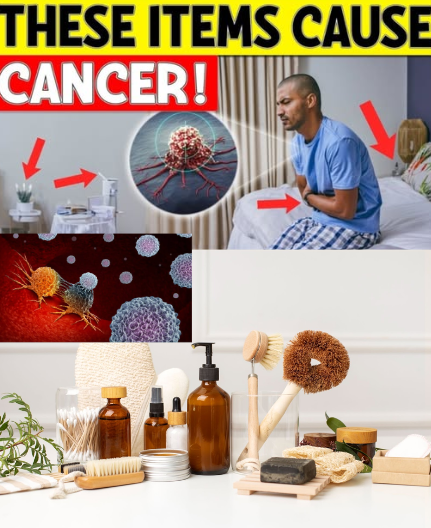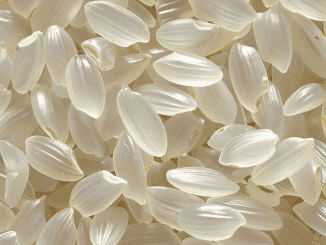
Think Your Home Is Safe? You Might Want to Look Again
Your home is where you should feel safest. But what if some of the items you use every day—without a second thought—are silently affecting your long-term health? It sounds dramatic, but the science is real. Several everyday products found in almost every household have been scientifically linked to cancer. And the scary part? Most people don’t even know they’re at risk.
Let’s break it all down. Here are 10 surprisingly common things in your home that could be increasing your cancer risk—and what you can do to protect yourself.
Non-Stick Cookware: Convenient but Contaminated
We all love how easy it is to clean a non-stick pan. But behind that slick surface might be a chemical culprit: PFOA (perfluorooctanoic acid). It’s been associated with kidney and testicular cancers, according to multiple studies, including research backed by the American Cancer Society.
What to do instead:
Switch to ceramic, stainless steel, or cast iron pans. They may need a bit more oil, but your long-term health is worth it.
Air Fresheners: Smells Good, But at What Cost?
Plug-ins, sprays, scented candles—these might make your home smell amazing, but many of them release volatile organic compounds (VOCs). Chemicals like formaldehyde and benzene, both found in air fresheners, are known carcinogens.
Better option:
Use essential oils in a diffuser, open windows for fresh air, and place natural odor absorbers like baking soda or activated charcoal around your home.
Plastic Food Containers: Microwaving Trouble
Heating food in plastic may seem convenient, but it can release harmful substances like BPA (bisphenol-A)—a compound that’s been linked to breast and prostate cancers. Certain plastics labeled #3 (PVC), #6 (PS), and #7 (polycarbonate) are especially risky.
Safer solution:
Choose glass or stainless steel containers, especially for hot foods. And no matter what—don’t microwave plastic.
Cleaning Products: Not So Clean After All
Bleach, disinfectants, and other commercial cleaners often contain chemicals like 1,4-dioxane and formaldehyde, which have been flagged by the EPA and OSHA for their cancer risks. Breathing them in or absorbing them through your skin over time adds up.
Healthier habit:
Go natural. Clean with vinegar, baking soda, and lemon. Or buy brands that are clearly labeled non-toxic and fragrance-free.
Paraffin Candles: Cozy Glow with a Toxic Twist
Lighting a candle at night can feel comforting—until you realize that paraffin wax, derived from petroleum, can emit toluene and benzene when burned. Both are linked to cancer.
Video : 10 Innocent-looking Household Items That Can Cause Cancer (Backed By Science)
Swap this out:
Buy candles made from beeswax or soy, with cotton wicks and natural essential oil scents.
Shampoos and Body Products: Beauty That Backfires
Your skin absorbs what you put on it. Many personal care items contain parabens, phthalates, and sulfates, which can mess with your hormones and have been linked to cancers in long-term studies.
Upgrade your routine:
Read labels. Look for products marked paraben-free, phthalate-free, and made from organic ingredients.
Pressed Wood Furniture: That “New Furniture” Smell Isn’t So Sweet
Ever noticed that strong smell coming from new furniture made of particleboard or plywood? That’s likely formaldehyde-based resin off-gassing into your space. Formaldehyde is a confirmed human carcinogen, according to the National Cancer Institute.
Here’s a better route:
Opt for solid wood furniture, or at least keep your home well-ventilated if you bring in new pressed wood items.
Microwave Popcorn Bags: Easy Snack, Hidden Danger
Those convenient microwave popcorn bags are often coated in PFCs (perfluorinated compounds). When heated, they break down into PFOA, a probable carcinogen.
Pop smarter:
Make popcorn the old-school way with kernels and a little oil on the stovetop. Tastes better and is way safer.
Pesticides and Herbicides: Weed Killer, Health Killer?
Many common lawn treatments and pest control products—especially those containing glyphosate (like Roundup)—have been classified as “probably carcinogenic” by the International Agency for Research on Cancer.
A safer solution:
Use organic gardening methods or homemade pest deterrents (like vinegar spray or neem oil). Bonus: they’re better for pets and the planet too.
Dry-Cleaned Clothes: Hidden Chemicals in Your Closet
Dry cleaners often use a solvent called PERC (perchloroethylene), which has been linked to bladder, esophageal, and cervical cancers. Residue can remain on your clothes and in your home’s air.
The fix:
Choose eco-friendly cleaners that use CO2 or water-based cleaning systems. Some are labeled “wet cleaning” or “green cleaning.”
Video : 10 COMMON Household Items That Cause CANCER
Conclusion: Your Home Should Heal, Not Harm
We can’t live in a bubble—but we can make smarter choices. The everyday items on this list don’t need to rule your life, but being aware of their risks helps you take control.
Replace what you can. Use what you must with caution. Every small change is a step toward a healthier, safer home. Think of it this way—just like you wouldn’t eat spoiled food, why expose yourself to slow-acting toxins hiding in plain sight?
You deserve a home that supports your well-being. And with just a little effort, you can turn that risk-filled house into a true sanctuary for your health.


